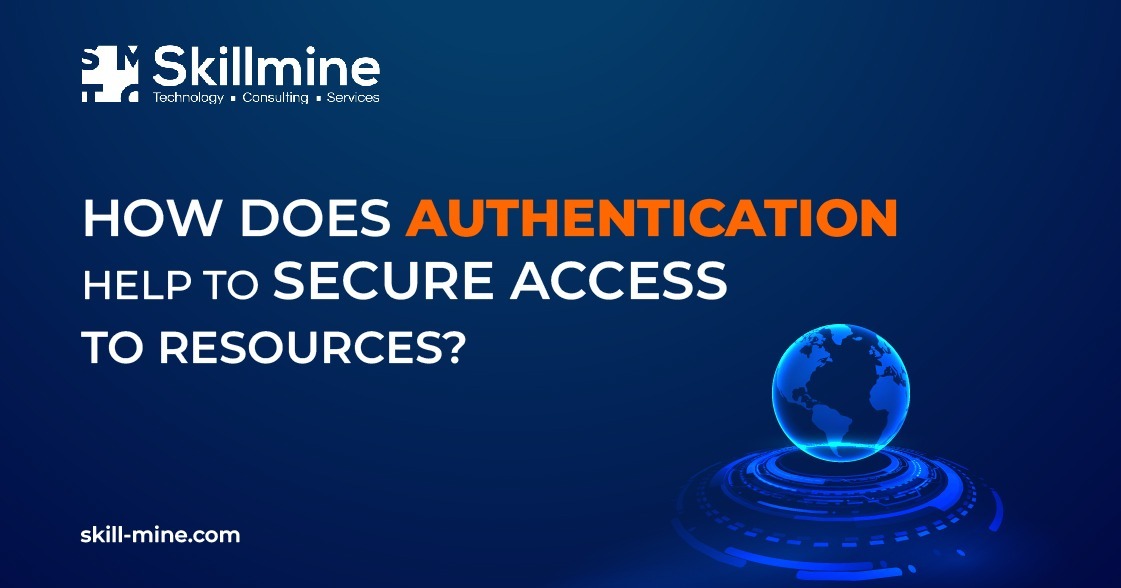The process of demonstrating the validity of a fact or a document is known as authentication. The word is derived from a Greek word afthentikopoíisi which means authentic. Authentication systems provide access control by comparing a user’s credentials to those in a database of authorised users or on an authentication server.
Password authentication, which combines a username and password, is the most often used type of authentication. Users must provide the correct login information on the login page to “verify their authenticity” before accessing a device or an online account. If the user’s credentials are found to be legitimate after being compared to the data already saved in an internal repository, the service provider will grant them access to their account. This way, authentication ensures that access to your resources is granted only to genuine users.
Although password authentication is the most widely used method, passwords are notoriously unreliable and detrimental to the user experience. Password fatigue is a term used to describe the difficulty and pain experienced by users and IT departments when managing the numerous strong passwords needed to access various devices and accounts. Due to this reason, many users frequently reuse passwords or alter their initial strong passwords in ways that are simple to guess. Even more concerning is the fact that many users often utilize weak passwords. Such challenges and advancements in communication and cybersecurity technologies have given rise to novel authentication systems, most of which rely heavily on authentication factors. Take a look at these authentication factors that help to secure access to your resources:
Methods of authentication
Two-factor authentication: Two-factor authentication adds a second layer of security to the authentication process. In addition to the password, 2FA calls on the user to give another authentication factor. A verification code sent by text message to a pre-registered mobile phone or a code created by an authentication application is frequently required by 2FA systems.
Multi-factor authentication: Multi-factor authentication requires users to verify their identity using more than one authentication factor, such as a biometric factor like a fingerprint or face recognition, a possession factor like a security key, or a token created by an authenticator app.
Single-Sign-On (SSO) authentication: Single Sign On (SSO) is a technology that enables users to check in only once and then has their identities verified automatically whenever they visit other platforms or services. Users can access all their applications with SSO by only having to input their login information once.
Skillmine Authenticator is an indigenously developed authentication solution by Skillmine. Authenticator provides a seamless experience offering SSO and MFA. It also offers an additional layer of security coupled with customer identity secrecy at the highest level, compatible across different platforms supporting multiple protocols. Know more about Authenticator
One-time password: An automatically produced string of characters with numeric or alphanumeric characters that authenticates a user is known as a one-time password. This password is typically used for new users or users who have lost their passwords and have been issued a one-time password to log in or change to a new password.
Three-factor authentication: Three-factor authentication (3FA) is a type of MFA that makes use of three authentication factors often a knowledge factor (password), a possession factor (security token), and an inherited factor (biometric).
Biometrics: Although some authentication systems can rely purely on biometric identity, biometrics are typically utilized as a second or third authentication factor. The more popular biometric identification methods are voice recognition, facial or retinal scanning, and fingerprint scanning.
Mobile authentication: Mobile authentication is the process of confirming a user’s identity through their mobile or the device in question. This enables users to access resources and sites from anywhere. Multifactor authentication, which might incorporate one-time passwords, biometrics, or QR code validation, is used in the mobile authentication process.
Conclusion
In a constantly changing business environment, providing solid authentication is imperative. Through a patchwork of privacy and security laws, authentication ensures this, by providing cybersecurity and sustaining compliance.
Looking for expert technology consulting services? Contact us today.





